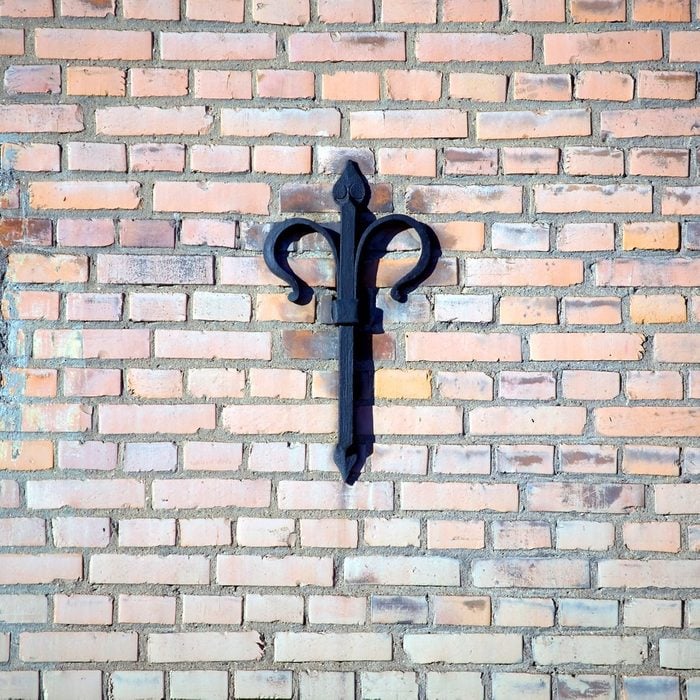
Metal Plates on Old Homes
These metal plates, which often are shaped like an “S”, an “X” or a star, are called anchor plates (or wall anchors). They are often seen on the outside of old bricks homes and are used to help prevent walls from bowing outwards and collapsing. Check out these retro recipes that deserve a comeback.
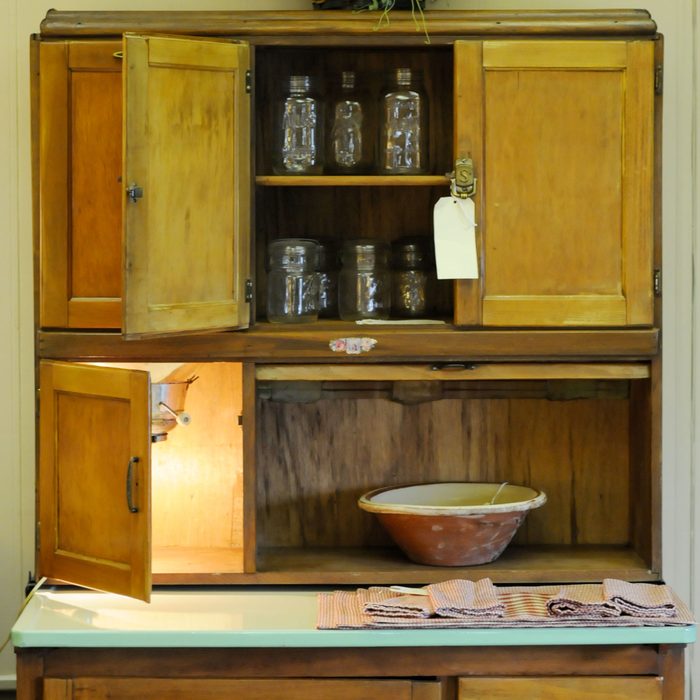
Hoosier Cabinet
A Hoosier cabinet is a free-standing kitchen cabinet that doubles as a workstation. These cabinets were common in the first few decades of the 20th century. They declined in popularity with the advent of built-in kitchen cabinetry and countertops. Follow these kitchen storage ideas that will save you so much space.
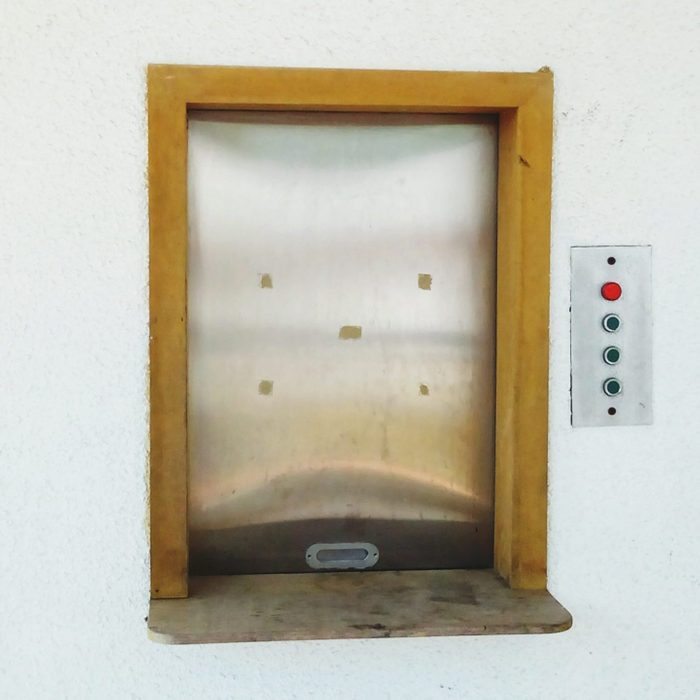
Dumbwaiter
Dumbwaiters were most often used to move dishes and food when the kitchen and dining room were on different levels of the house. If you have one in your old house and don’t really need it, you could use it as a clothes chute.

Root Cellar
Root cellars existed to store vegetables, fruits, nuts and more for long periods of time. Some were simply an unfinished room in the basement, while others were built into the ground a short distance from the house. Present-day food distribution systems and refrigeration have rendered root cellars unnecessary for most people. But if you have one, you can certainly still put it to good use by storing homemade canning recipes.
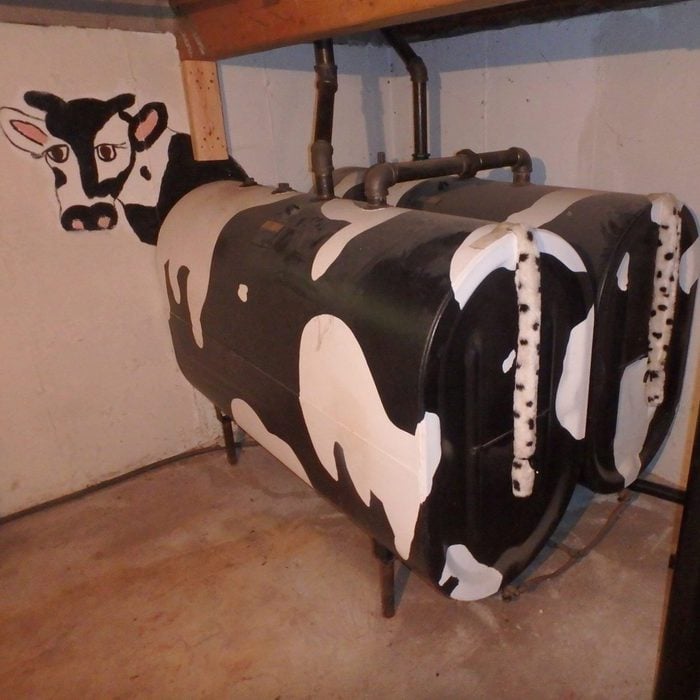
Oil Tanks
Some old houses still use oil to heat the house but they’re increasingly rare. More often people have kept the old tanks in the house, but not everyone decides to get creative with their oil tanks like this cow-painted one. Running out of solutions to heat up that cold room in your house? Try these tips on how to warm up a cold room.
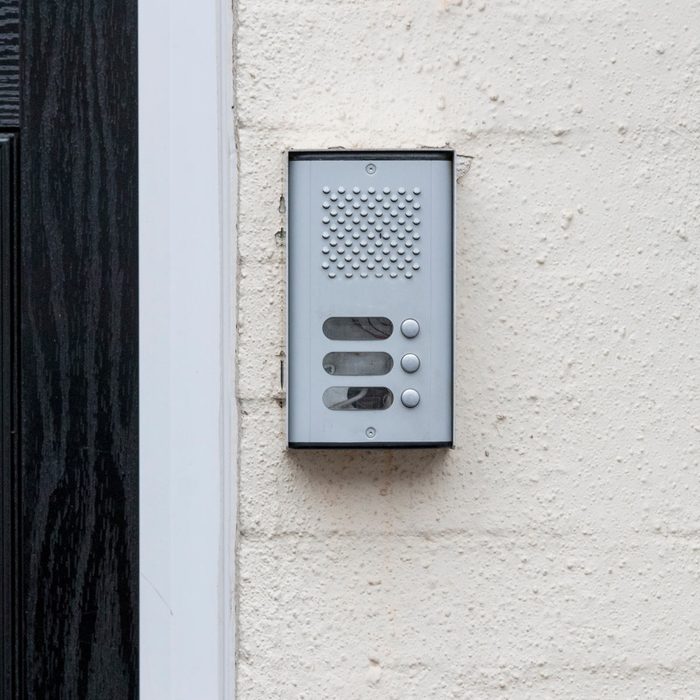
Intercom
Intercoms are still around on apartment buildings but some older homes have them, too. Technology has advanced to replace the need for intercoms as people tend to call people on their cellphone before entering a house or people have added a smart doorbell, like Ring.
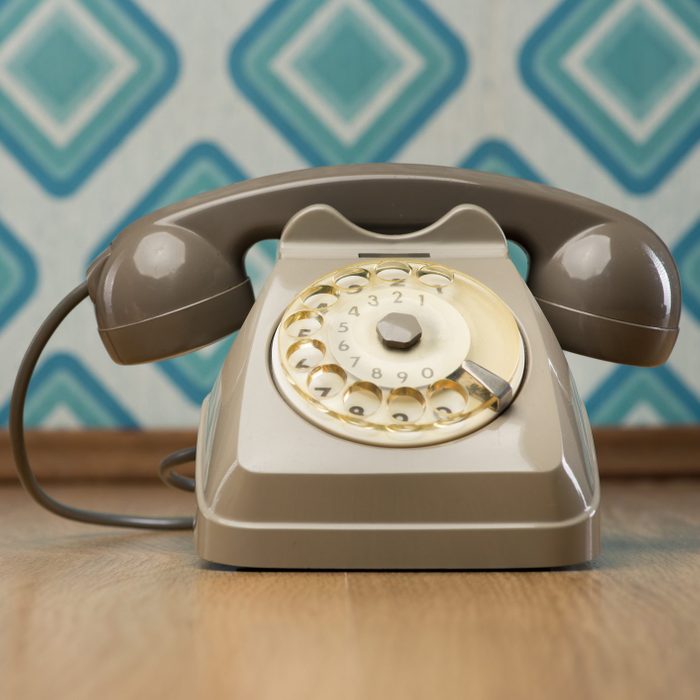
Dial a Rotary Phone
Cell phones and modern cordless phones have nothing on the charming, vintage design of a classic rotary model—which is why collectors and decorators still love to buy them for style alone. Here are some clever ways to use your smartphone in the kitchen.

“Rabbit Ear” TV Antennas
If the only rabbit ears you’re familiar with are the ones you bite off of your chocolate bunnies, then you probably weren’t around in the era when TVs still needed their antennas adjusted for clear reception. The twin antennas that topped TVs from their launch in the 1950s until about 2007, when they were phased out, were notoriously frustrating to manipulate. Today, we have built-in digital tuners that often deliver a crystal-clear, HD-quality picture, and rabbit ears have become a virtual relic.
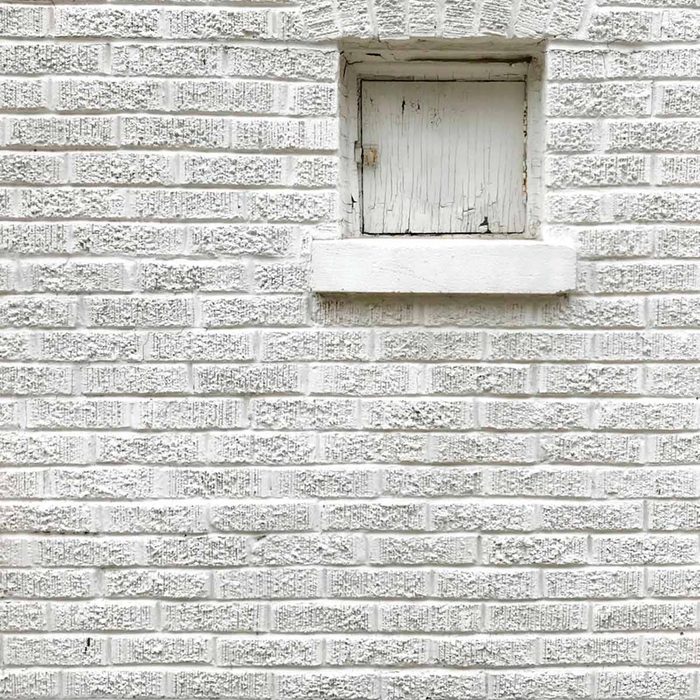
Milk Door
You probably haven’t had milk delivered to your door in a very long time. However, it used to be a common occurrence, with a milk door standard in many homes. The small door was situated on the side of the house, and was used to leave bottles of milk between the walls. By the way, here’s how long the milk in your fridge really lasts.
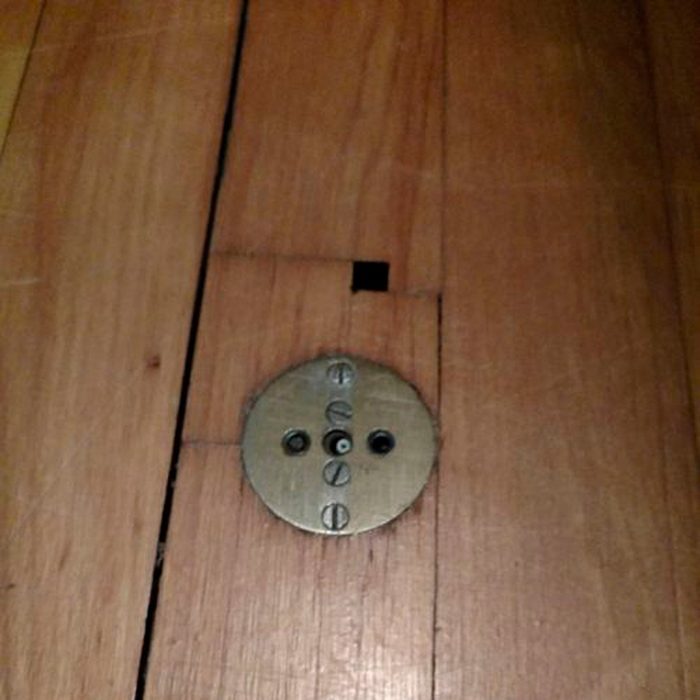
Servant Floor Button
Also known as a butler’s call or ring, a servant floor button was situated in the middle of the floor of the formal dining room. It was used to summon the butler by stepping on it. Today, if an old house has one, it’s likely hidden beneath a rug under the table.

Razor Slit in Medicine Cabinet
Decades ago, medicine cabinets had a tiny slit to dispose of old razors. Where might those dirty razors go? Nowhere, really. They merely went into the wall. Out of sight, out of mind!
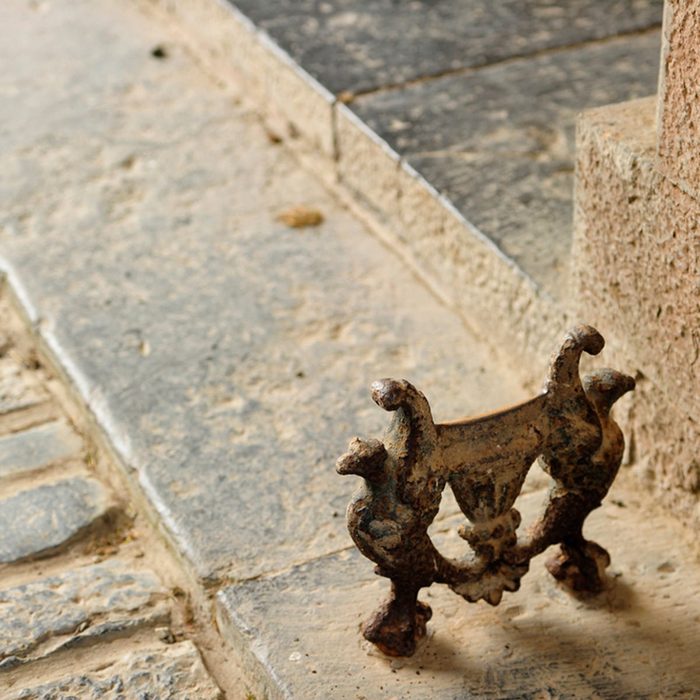
Boot Scraper
If you’ve ever walked up to someone’s front door and seen a strange ground-level cast-iron contraption, it’s a boot scraper. Known as a “decrottoir” in French, which refers to the need to remove excrement (yuck), boot scrapers popped up in the 18th and 19th centuries alongside the invention of walking paths. With modernism came less mud on the streets, and so the boot scraper declined in necessity and popularity.
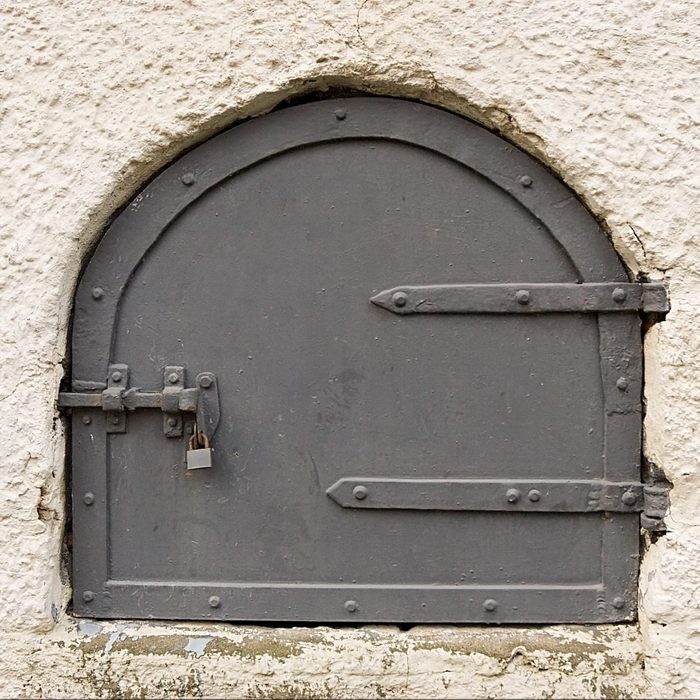
Tiny Iron Door Leading to the Basement
While natural gas is the heating fuel of choice for many people today, up until around 1940, most families heated their homes by burning coal.
Coal deliverymen traveled door-to-door to provide people the fuel they needed to power their furnace. They shoveled coal through the small door and down the chute into the basement. Once in the basement, homeowners could shovel the coal directly into the furnace. Today, most of these chutes have been sealed, though you will often still see the iron doors on older homes.
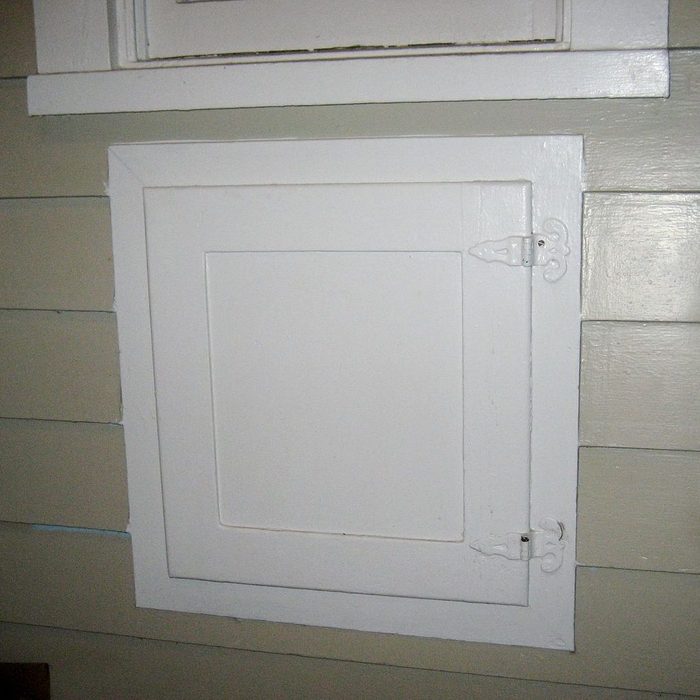
Ice Door
Are you puzzled by the funny little door in your home’s pantry? This is an access door the iceman used to use. Homes had an area in the pantry or kitchen dedicated to the icebox. Access was created for this door on the exterior, allowing for delivery of fresh ice to the house without coming inside. Next, check out these super cool icebox dessert recipes.